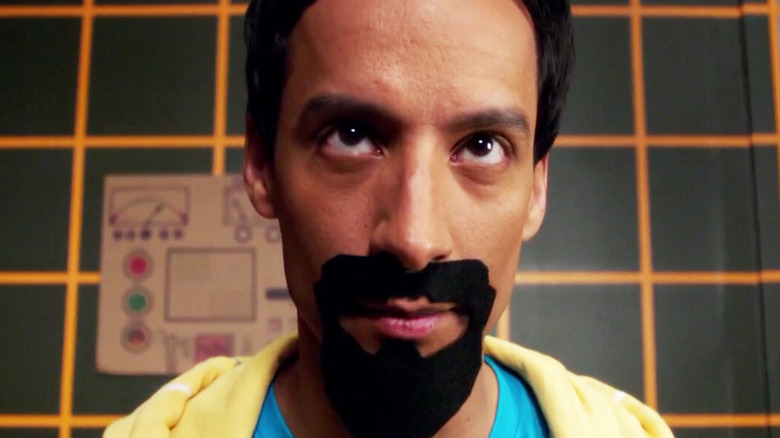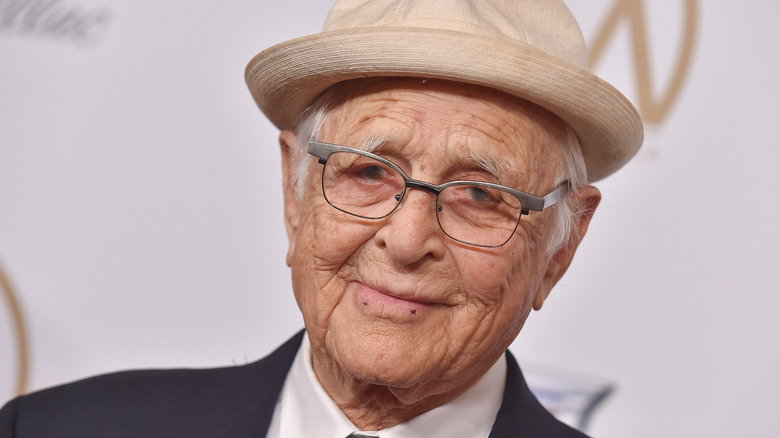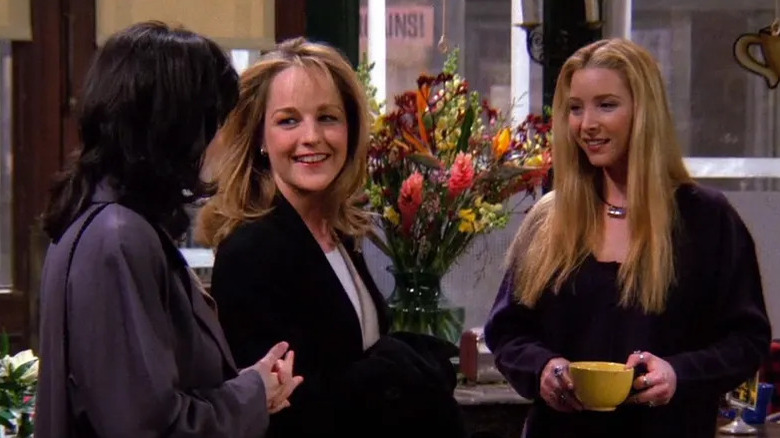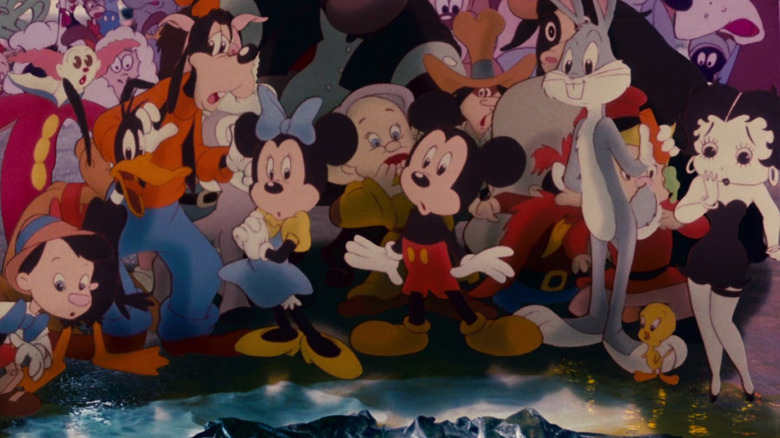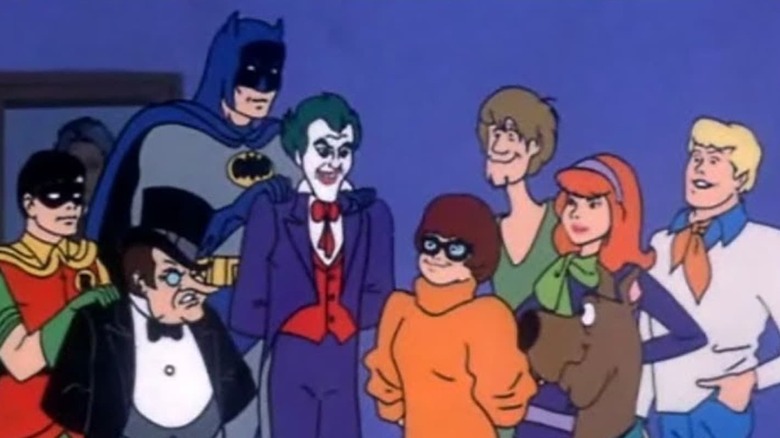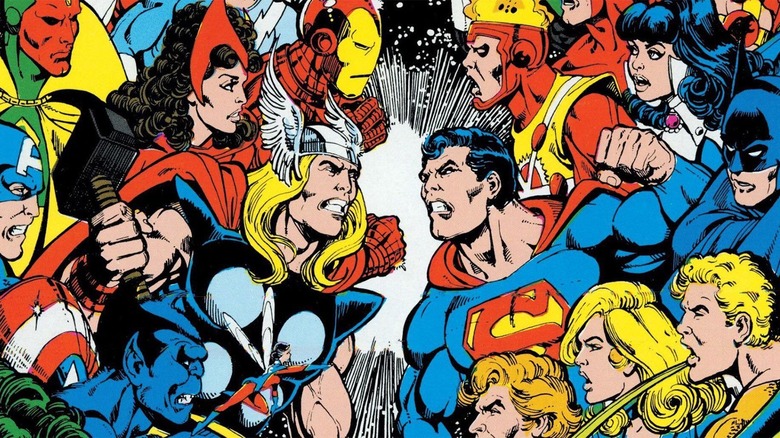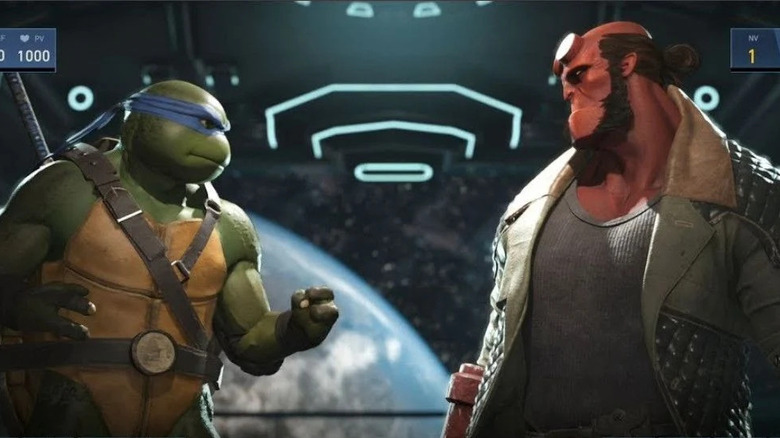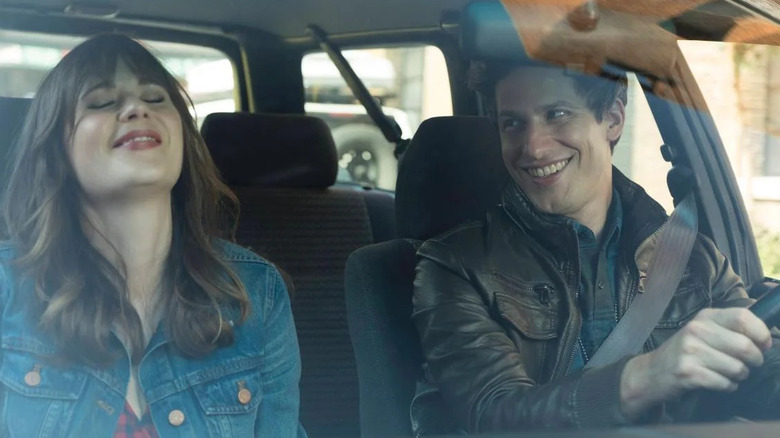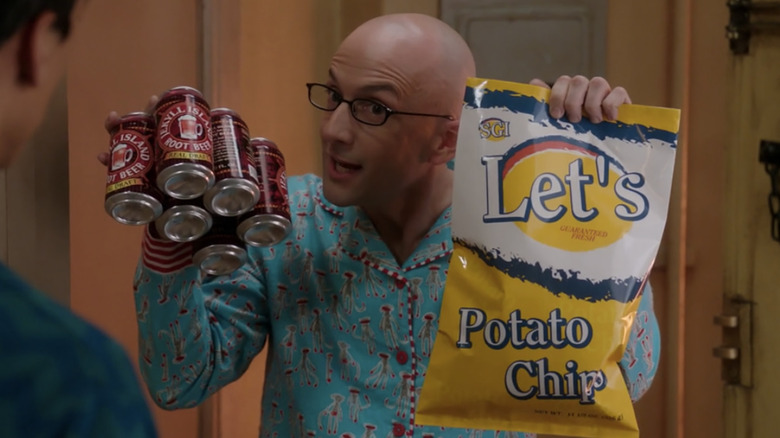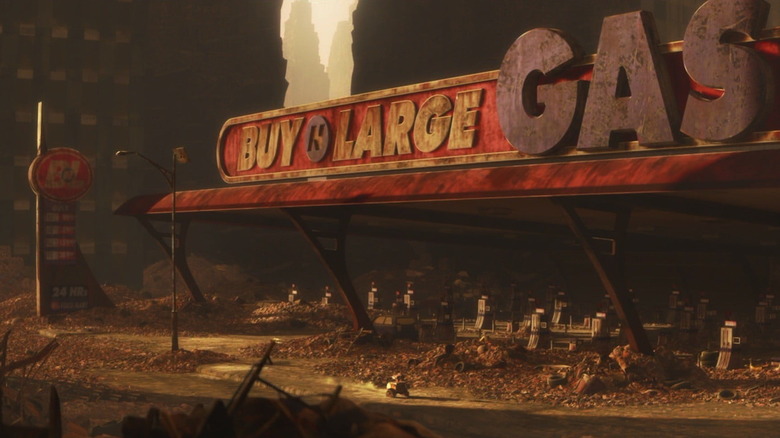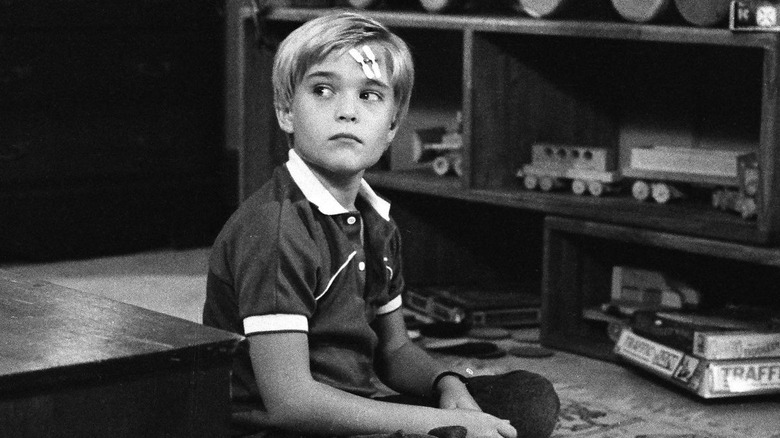Why Every TV Series Ever Exists In A Shared Universe
Every story you've ever watched unfold on television happened in the same universe, and we can prove it. These days, the terms "shared universe" and "expanded universe" are commonplace, thanks in large part to the stupefying success of the Marvel Cinematic Universe and would-be competitors like the DC Extended Universe and the MonsterVerse. But the concept dates back much further than any current trend. In the near century of television history, many shared universes have arisen and, in some cases, even bled into others.
Thanks to phenomena like programs sharing props manufactured by fictional companies, character crossovers, and spinoff series, television has spun itself a canonical web that ensnares every fictional fly it encounters. You'd be surprised at many of the weirdest linked TV continuities, which join franchises you would never expect to fit together. With all these connections to consider, we must conclude that we've all been watching one gloriously diverse and melodramatic existence unfold purely for our entertainment. In this article, we'll point out some of the strongest evidence in support of this theory and prove beyond a doubt that every TV series ever exists in one shared universe.
Norman Lear
If you're a fan of comedy writing, TV history, or even Black culture, there's an excellent chance that you know the name Norman Lear. The titanic figure in the TV industry wrote and produced a slew of legendary sitcoms and helped normalize more positive depictions of minorities in popular culture. Though Lear was far from the first TV creator to parlay a successful series into multiple spinoffs and subsequently cross them over, he is arguably the most important to do so. Even setting aside the tremendous social impact of his shows, Lear's shared world was important because it connected some of the most popular shows on TV, introducing millions of viewers to the concept of shared narrative for the first time.
The Lear Television Universe (LTU) is formed by "All in the Family," "The Jeffersons," "Good Times," and "Sanford and Son." Over the years, a playful spirit of cooperation and mutual respect led characters from that universe into other universes. The Jeffersons showed up on "The Fresh Prince of Bel-Air," which itself crossed over with "Diff'rent Strokes," which spun off into "The Facts of Life." Just from the starting place of "All in the Family," we can see a web rapidly expanding.
Must See TV
The '90s was a totally unique period in TV history. An almost unbelievable number of TV's greatest all-time hits overlapped, competed, and crossed over. In their fervent bid for broadcast dominance, NBC connected a number of its biggest series from the "Best Night of Television on Television" and "Must See TV" eras. ABC likewise connected many series from its "TGIF" block.
On the NBC side, the mega-hit "Cheers" spun off into "Frasier," which crossed over with "Caroline in the City," which in turn crossed over with "Friends," which crossed over with "Mad About You," which crossed over with "Seinfeld."
Turning to ABC and their TGIF series, we find crossovers between "Family Matters" — specifically its breakout character, Steve Urkel — appearing on "Step by Step," "Full House," and canonically mentioning "Boy Meets World," which itself once featured Sabrina from "Sabrina the Teenage Witch," who also appeared in "Clueless." More examples remain, but the point is illustrated.
Animation is easy
Moving away from the live-action portion of the web of television shows for a moment, we find the world of animation replete with its own shared universes, crossovers, and even firm connections back to live action. Likely due to the relative ease of scheduling and replacing voice actors compared to traditional actors, production studios have flooded the animated world with canonical crossovers and team-ups.
Obvious examples are Disney's many films and series, the constant combinations of Hanna-Barbera toons, and the shared Cartoon Network continuity which links back to Hanna-Barbera characters. And there are many, many more, including the DC Animated Universe, Marvel's animated universes, Fox's animated universes, and the various smaller universes linked by Nickelodeon's many series.
In the world of animation, however, one property creates more links than any other — "Scooby-Doo." Before we dig into that franchise's unprecedented multitude of crossovers, we have to mention the obvious runner-up — 1988's "Who Framed Roger Rabbit." When the movie's story arrives at Toontown, we discover characters from Disney, Hanna-Barbera, Looney Tunes, and even Betty Boop all reside in a shared universe. When these connections are joined by the multitudinous others throughout the decades, it becomes clear that the vast majority of animation is inexorably linked.
Scooby-Doo
With all due respect to perennial heavyweight "The Simpsons," "Scooby-Doo" reigns supreme as the animated franchise that connects the most TV worlds into one. To begin with, it's a Hanna-Barbera property, meaning it's already connected with "Harvey Birdman," "Space Ghost," "Yogi Bear," and dozens of others. But the tendrils of "Scooby-Doo" reach out much further than that. The Mystery Machine's ghost-hunting quintet have teamed up with the Addams Family, Elvira, multiple animated versions of the DC Universe, the Looney Tunes, Johnny Bravo, Godzilla, and a seemingly endless list of others. They've even made forays into live-action series like "Sabrina the Teenage Witch," which connects them — and by extension, all the aforementioned animated shows — to the TGIF Universe.
The Scooby-Doo gang also have a few unique connections of their own, having shared a special with the guys from "Supernatural" and starred in multiple movies with WWE wrestlers. Those WWE crossovers, "Scooby-Doo! WrestleMania Mystery" and "Scooby-Doo! and WWE: Curse of the Speed Demon," are one of the oddest additions to our hypothesized shared TV universe, as the line between fiction and reality occasionally gets blurry in pro wrestling. Regardless, the role that Mark Calaway played for 33 years, The Undertaker, is now as real within the context of the fictional universe as Spider-Man or King Kong thanks to his friendship with Scooby Doo and his human pals.
Comic book multiverses
It's no surprise that comic book publishers tend to collect their various properties under the umbrellas of shared universes. DC characters like Wonder Woman and Superman occupy the same reality, allowing them to interact, just as Marvel characters like Moon Knight and Spider-Man occupy their own timeline. But these realities each contain additional connections that play massive roles in linking all of comics to all of TV.
Both DC and Marvel multiverses canonically contain the other, which brings the "Big Two" publishers into a single gigantic continuity. This gargantuan merging of two multiverses also contains all the cinematic and TV universes associated with "Big Two" characters. For example, the MCU is one universe among the larger Marvel Comics Multiverse, and contains MCU-adjacent TV shows such as "Daredevil" and "Agent Carter." As DC's multiverse also contains the DCEU, the DC animated universes, the Arrowverse, the 1966 "Batman" series, "Lois & Clark: The New Adventures of Superman," and all the rest, we can safely say that all of the "Big Two" superheroes in all their incarnations exist in one shared canon with Scooby-Doo, Bugs Bunny, and Mickey Mouse.
Video game mashups
Like comic books, video games operate within their own universes, but occasionally bring in characters from TV in order to generate some crossover fun. Fighting games play host to the most crossovers by far, likely due to how comparatively easy it is to license a character without any need to develop a new story. One of the strongest connections is between the DC and Mortal Kombat universes. DC characters appear in "Mortal Kombat 11," while Raiden and Sub-Zero show up in "Injustice 2."
The two games share characters and acknowledge their place within multiverse realities. Let's keep in mind the many previously established TV connections to the DC Universe, and the fact that the myriad iterations of the DC Universe all exist within a single omniverse. Thanks to Mortal Kombat, we can link several other beloved characters and, by extension, their home universes. These include the Teenage Mutant Ninja Turtles, Hellboy, Rambo, Robocop, the T-800, and Spawn, who all bring their respective realities into the fold. In fact, the presence of the extremely crossover-prone TMNT links up a number of transitive realties.
Late-stage sitcoms
One of the most dependable sources of crossovers between franchises is creative bankruptcy. Generating new ideas for an episodic story for a decade or so can be extremely challenging, and so it's no surprise that sometimes producers turn towards easy gimmicks like crossovers.
There are some shows with enough creative street cred to give the occasional gimmick a pass, like in the case of "Brooklyn Nine-Nine" and "New Girl." The two Fox network shows crossed over in the former's fourth season and the latter's sixth. Unsurprisingly, the joint episodes were not the strongest displays of either show's storytelling chops, but at least they managed to produce one enduring meme. Fox has used multi-show events to stave off the creative blues on a few other occasions. "The Simpsons" and "Family Guy" came together with the "Simpsons Guy" special, and characters from "Family Guy," "The Cleveland Show," and "American Dad" all participated in the "Night of the Hurricane" special.
Even one of the allegedly best written TV series of all time, "The X-Files" resorted to bringing in a cameo from another show in its fifth season — Detective John Munch, played by Richard Belzer, best known from "Homicide: Life on the Street" and "Law & Order: Special Victims Unit." In addition, as Inverse noted, Munch appears to wield the ability to appear on any television show he pleases, regardless of its network or genre.
Give them props
Some connections between TV universes feel pretty tenuous compared to characters from different programs interacting with each other directly. Dream sequences, for instance, might come across as a wee bit dubious. But the ubiquity of fictional products — food, drinks, cigarettes, and other items used by TV characters from multiple, supposedly separate universes — make a compelling case for the single TV omniverse theory.
One of the most famous fictional brands is Morley cigarettes, the cancer-stick of choice for the Cigarette-Smoking Man from "The X-Files." But Morleys are far from unique to "The X-Files." Characters from "Friends," "The Twilight Zone," "Burn Notice," and others have smoked Morleys. The implications of so many disparate characters patronizing the same company should be clear by now. There's also Let's Potato Chips, which appeared in "Arrested Development," "NCIS," "Grey's Anatomy," and more. The chips also made a prominent appearance in "Community" because of course they did. You've likely seen characters from dozens of movies and TV shows, ranging every genre you can imagine, drinking Heisler Beer. The prop drink suggests a common continuity in which the Heisler corporation dominated the alcoholic beverage industry.
The companies we keep
We wouldn't have fictional products without fictional companies, of course. One fan-favorite fictional company is Yoyodyne, first introduced in 1960s Thomas Pynchon novels "V' and "The Crying Lot of 49," and later appearing in multiple television series, such as "Silicon Valley," "Angel," and "Star Trek."
And then there's the case of Oceanic Airlines. The fictional airline is most famous for its central role in "Lost," as the crash of Oceanic Flight 815 is the catalyst for the entire series. But the company first started showing up on TV long, long before 2004's "Lost," and has outlived the show. You have to wonder why intelligent characters such as Richard Castle, for example, would ever choose to fly Oceanic after one of its planes disappeared on a magic island with a smoke monster, went back in time, and ended up in Purgatory (sort of). Some corporations even seem to play large parts in universe-altering events, such as Pixar's Buy n Large, which "WALL-E" revealed to have partially ruined planet Earth.
More like St. Everywhere
There is one character from one TV series that has inspired more analysis and theory than any other in the pursuit of proving the existence of a shared TV universe – Tommy Westphall from "St. Elsewhere." Westphall spent the vast majority of the series as a minor character — the rarely seen son of Dr. Donald Westphall, and only appeared in 17 out of the show's 137 episodes. Tommy's exceptional claim to fame came in the series finale, when the show heavily implied that the entire series had taken place in his mind. Given the number of crossovers between "St. Elsewhere" characters and fictional people from other shows — and those characters' crossovers, in turn — the Tommy Westphall Universe Hypothesis suggests that all of TV exists within the mind of the young Tommy Westphall, played by accomplished TV actor and apparent Aquaman fan Chad Allen.
The hypothesis first came about via an innocuous blog post from writer and DC animation luminary Dwayne McDuffie in 2002 and has since become a central fixture in hundreds of shared universe hypotheses. A multitude of fans and professionals have added their touch to the hypothesis, to the point where multiple outlets keep continually updated lists on the universe's many inclusions. One of the "St. Elsewhere" producers, Tom Fontana, told the BBC, "Someone did the math once and something like 90 percent of all television took place in Tommy Westphall's mind. God love him."
